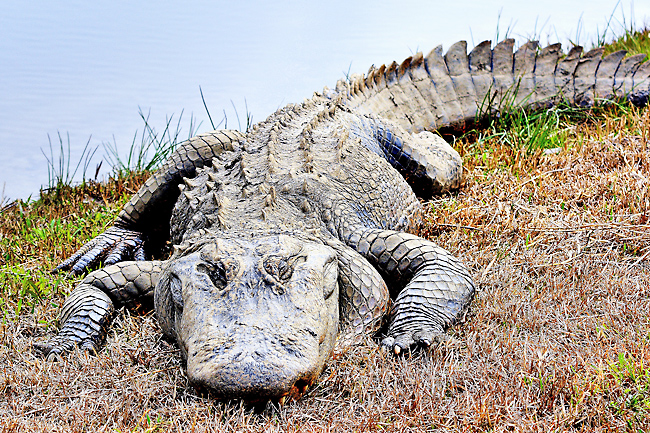Ann Cameron Siegal
THE WASHINGTON POST – Since 2015, alligators have occasionally been seen in Maryland and Virginia communities around the Chesapeake Bay.
Does that mean the prehistoric-looking reptiles are moving into the Mid-Atlantic region?
Adult alligators can spend time in brackish waters where food resources such as blue crabs are plentiful, said alligator biologist of North Carolina’s Wildlife Resources Commission Alicia Davis.
“However, the Chesapeake Bay is too far north to support alligator populations. North Carolina is the northernmost extent of alligator range.”
Chris Rowe of University of Maryland’s environmental services thinks humans are to blame for the sightings. “My instinct is that they were released illegal pets,” he said.
Alligators have survived millions of years but need temperatures above 40 degrees Fahrenheit to be active and can’t digest food below 70 degrees Fahrenheit.
Reptiles are coldblooded and rely on external sources of heat to regulate their body temperature.

The armour-looking scutes along a gator’s back act like solar panels. As alligators bask in the sun, blood flowing through the scutes warms the gator’s body. To cool down, gators hold their mouths open. Alligators don’t hibernate. In cold weather, they go into short periods of dormancy called “brumation”. Their heart rate slows down, and they become very sluggish, burrowing into waterside dens or tunnels, venturing out periodically to bask in the sun.
Gators can’t breathe underwater. They surface periodically, or keep their nostrils above ice to breathe.
With large bodies and short legs, gators cannot migrate over land. Nor do they have special glands to filter out toxic levels of salt as crocodiles do.
They live in swamps, lakes and slow-moving freshwater rivers, and some brackish waters (part fresh, part salt).
You are most likely to see gators in zoos and aquariums, but if you were to see one in the wild, you should keep your distance.
“People should keep at least two school-bus-lengths away from an alligator,” Davis said.
Gators are most active between dusk and dawn. They can run about 35 miles per hour on land in short bursts and often hide in vegetation along the water’s edge.
Their sneak attacks on food sources, and occasionally on people, are because they can lay still underwater with only their nostrils and eyes showing above.
But humans are not typical prey. In most cases, alligators try to stay away from them.
“They’re not monsters,” Rowe said. “Alligators rarely have anything to do with humans unless humans do something to them.”


